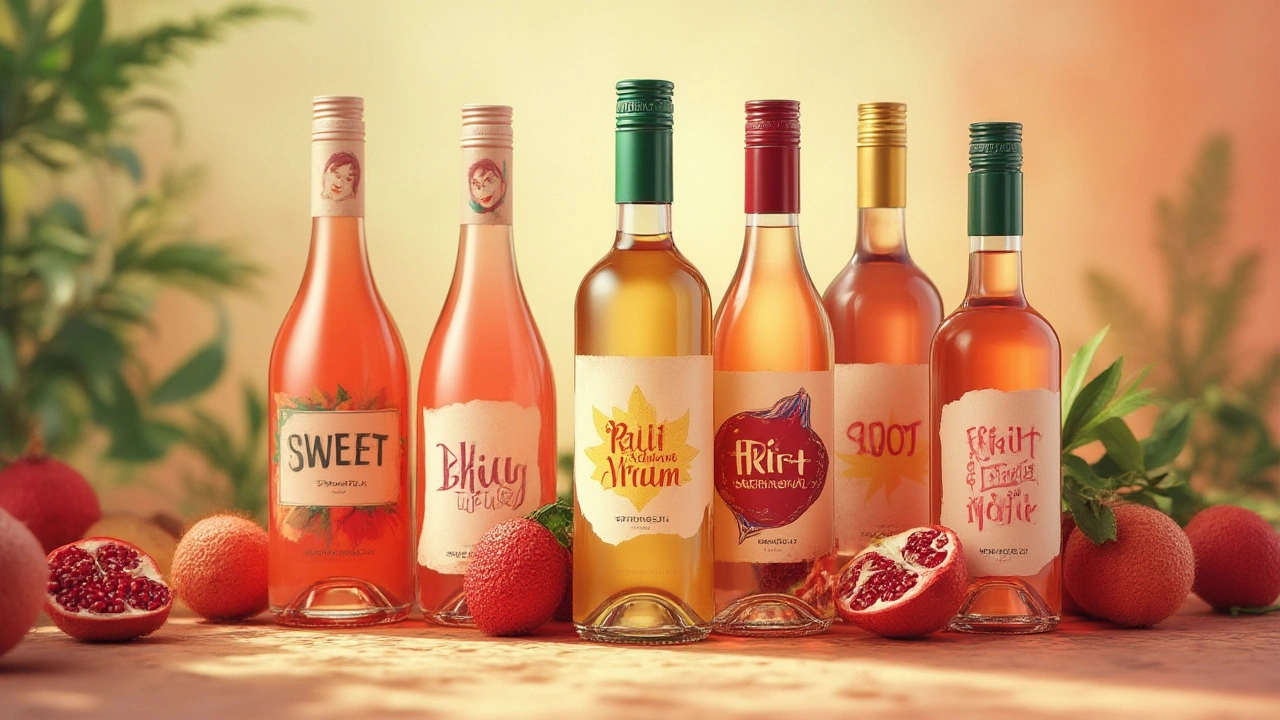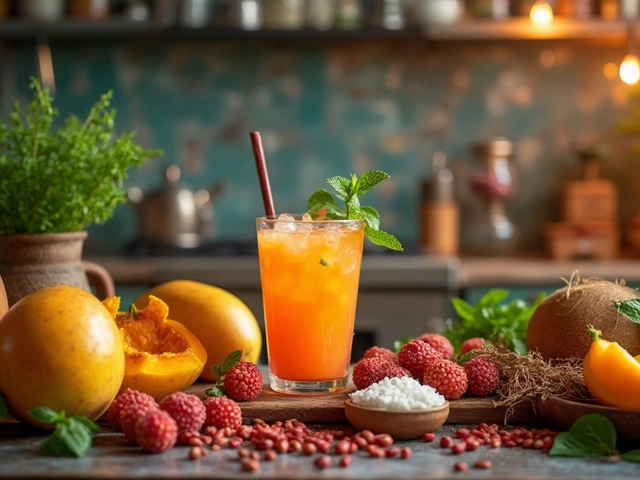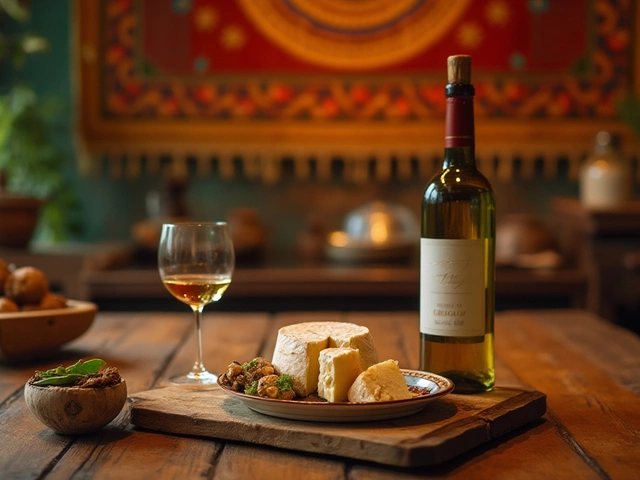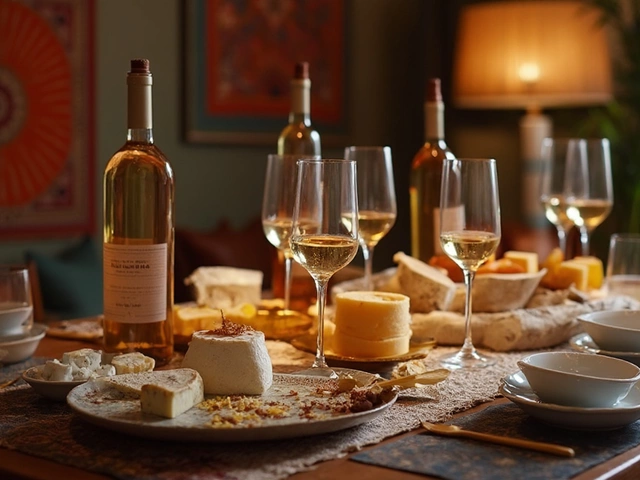
Ever felt left out when others raise their glasses? That moment when the wine is poured and everyone swirls and sips, but you just can’t get past the strong smell or bite of alcohol? You are far from alone. A big chunk of people find the taste too harsh, maybe even plain unpleasant. Some of us just don’t like alcohol at all, but still find the ritual around wine kind of charming. Others are simply curious—can there be a wine that actually tastes good to someone who has never enjoyed booze? I get it. I was the same until I found out there’s a whole world of easy-going, beginner-friendly wines out there. It’s nowhere near as intimidating or snobby as it seems. Let’s cut through the noise and talk about how to get started with wine if the idea of sipping spirits honestly freaks you out.
Why Most Wine Tastes So Strong — And How to Dodge It
The truth is, traditional wine can feel like a slap in the face if you’re not used to alcohol. Most wines hover around 12-15% alcohol by volume (ABV), but it’s not just potency that makes people wrinkle their noses. There’s the sharpness from the acidity, the dryness that zaps away any hint of fruit, and sometimes tannins that make your mouth feel chalky. If you grew up drinking juice or cola—as kids in Scotland often do, my daughter Keira included—wine’s flavor is worlds away. It’s easy to see why a first sip could have you scrabbling for water.
But wine comes in thousands of styles, and some are much softer, lower in alcohol, and even effervescent—just think of a good Moscato d’Asti or a German Riesling Kabinett. These wines are designed to be light and playful, sometimes even slightly fizzy, which makes them super approachable. In fact, a survey published in "Wine Intelligence" found that 28% of self-identified non-drinkers tried wine when they found sweet or semi-sweet options, often at family gatherings or special events.
Beginner wine doesn’t mean bottom-shelf stuff, by the way. Some of the world’s famous wineries make wines with low alcohol or a sweeter taste profile on purpose, not just for newbies. The trick is knowing what to look for so you don’t get tricked by a label in a language you don’t understand.
| Wine Style | Typical ABV (%) | Sweetness | Beginner Appeal |
|---|---|---|---|
| Moscato d’Asti | 5-6 | Sweet | Very high |
| Riesling (Kabinett) | 7-9 | Off-dry to sweet | High |
| Barefoot Pink Moscato | 8 | Sweet | High |
| Lambrusco | 8-10 | Fruity, off-dry | High |
| Brachetto d’Acqui | 5-7 | Sweet | Very high |
If you’re looking for something that doesn’t scream “I’m drinking alcohol,” skip dry reds for now. They’re an acquired taste and often pack more tannins and alcohol. Stick to whites, rosés, and sparkling styles from cooler regions—these almost always have lower alcohol and more natural sugar.
I was surprised to learn that some supermarkets now carry alcohol-removed wines that actually taste ‘wine-like’. While it’s not quite the same (and can taste a bit thin), for many folks, it’s the sweet spot between adult taste and a child’s palate.
Don’t be put off by people saying “just keep trying and you’ll get used to it.” That’s like telling a kid to keep eating broccoli until they like it. If you’re curious, great wines for beginners actually celebrate gentle flavors from the start.

Finding Sweet, Fruity, and Low Alcohol Wines You’ll Actually Like
Let’s be real—sweet and fruity wines are usually a hit with wine newbies because they feel more like a treat than a chore. There's a reason why bottles like Moscato d'Asti, Lambrusco, or Pink Moscato fly off shelves at picnics, barbecues, and weddings. These wines taste less of ‘grown-up bitterness’ and more of ripe fruit, summer picnics, and easy laughs.
The world’s friendliest wine for first-timers is probably Moscato d’Asti. It comes from Piedmont, Italy, and is only around 5-6% ABV. Moscato is gently sparkling, super fragrant, bursting with peach and orange blossom, and nowhere near as sweet as fizzy pop. It’s like grown-up lemonade crossed with fruit salad.
Another treasure? German Riesling from the Mosel region, especially the “Kabinett” or “Spätlese” style. These wines have a little more alcohol than Moscato (about 8-9%) but are loaded with flavors of green apple and apricot, balanced by tangy acidity. You’d be amazed how many wine snobs secretly adore these bottles.
Don’t skip Lambrusco, either. Often misunderstood, cheap Lambrusco got a bad rap in the ‘80s for tasting like sweet grape soda, but authentic Lambrusco from Emilia-Romagna, Italy is bright, lightly sparkling, and tastes of strawberries and cherries. The alcohol sits at a comfy 8-10%, so you won’t get that fiery burn.
If you’re after a pretty pink wine that still doesn’t knock you over, find Brachetto d’Acqui. Another Italian fizz, it’s full-on raspberry and rose petals in a glass, with less than 7% ABV. It feels like dessert, but not childish. Shops in Edinburgh usually stock this one come wedding season, and it makes a lovely gift for friends who ‘don’t do wine’.
Of course, you might be curious about white Zinfandel, which exploded in popularity thanks to American wineries in California. Sweet, pink, and gentle, it’s lower in alcohol than most ‘serious’ wines, but beware: some versions can be cloying. Look for bottles from Sutter Home or Beringer if you’re in the UK, as they tend to balance the sugar.
If you want the lowest alcohol and zero buzz, check the non-alcoholic range. Brands like Freixenet 0.0, Oddbird, or Torres Natureo do genuinely impressive alcohol-removed wines now. While the flavor isn’t quite a perfect match to the real deal, they fool your taste buds enough at a party to make you feel included without the morning regrets.
Here’s something to remember: wine labels don’t always make things easy. European ones usually list alcohol percentage and sometimes mention “dolce” (sweet), “amabile” (semi-sweet), or “secco” (dry). German winemakers highlight sweetness levels as “trocken” (dry), “halbtrocken” (off-dry), and “lieblich” (sweet), and you’ll usually spot a big clue on the label. If you see “Prädikatswein,” those tend to be sweeter, especially at Kabinett or Spätlese levels.
According to Jancis Robinson, one of Britain’s top wine writers, “Sweetness in wine is never just about sugar content—it’s the balance of acidity, aromatics, and the alcohol that makes a beginner reach for a second sip.”
“The best beginner wines soothe the palate, not challenge it.” — Jancis Robinson, The 24-Hour Wine Expert
Pay attention to the temperature, too: chilling a sweet or semi-sweet wine helps the flavors pop while softening any trace of alcohol even further. Trust me, even the most anti-wine person will say yes to a glass that’s served cold on a warm night.
If you’re buying for a group and want everyone to find something to enjoy, make a mini tasting flight with 3-4 sweeter styles. Let people sip, compare, and see what suits them best. Chances are, someone will ask where to buy the bottle they thought they’d hate.

Tips to Enjoying Wine When You Dislike Alcohol: How to Ease In With Confidence
Even with the right wine, the first glass can still feel foreign if you don’t like the taste of alcohol or you’ve always been a teetotaler. Good news—that awkward self-consciousness wears off quickly with the right tricks. Here are the things that help real people get comfortable with wine, even when they started at zero:
- Start slowly: Pour a half-glass, not a full one. Sip, don’t gulp. Your palate needs time to adjust.
- Add a splash of soda water: For slightly drier wines, a bit of lemon-lime soda, ginger ale, or fizzy water mellows out the bite. This is basically the continental “spritzer” and nobody judges it in Europe.
- Pair with something sweet or salty: Wine won’t taste quite as sharp if you drink it with crisps, salted nuts, or soft cheese. Sweet dessert wines with slightly salty snacks? That’s basically heaven.
- Go sparkling: Bubbles cover a lot of the burn and bring out natural fruity flavors. Ever noticed kids love apple fizz more than plain juice? Same logic.
- Keep things chilled: Colder wine always tastes less harsh than room temperature. Stick your bottle in the fridge for longer than you think.
- Use smaller glasses: There’s less pressure to finish, and it keeps you in control. The ritual of pouring and sipping is a big part of wine’s appeal, not the amount you drink.
- Try alcohol-removed options: Especially handy at family get-togethers, these let you join in the fun without any real alcohol taste.
- Don’t let anyone shame your taste: Ignore know-it-alls who roll their eyes at sweet wine. The best wine for you is the one you like right now.
If you ever visit a wine shop or supermarket in Scotland, don’t hesitate to ask staff for “beginner-friendly wine” or “something sweet and light.” Honestly, most shopkeepers love helping people discover their first proper bottle, and you’ll likely leave with something tasty and cheap.
If you want a foolproof starter pack, look for these labels in your local shop:
- Moscato d’Asti
- Lambrusco (not dry)
- Riesling Kabinett or Spätlese
- Brachetto d’Acqui
- Barefoot Pink Moscato
- Freixenet 0.0 (alcohol-free)
- Oddbird Alcohol-Free Sparkling Rosé
One last tip: if you’re serving guests who don’t like alcohol, make a low-alcohol sangria. Toss together a bottle of Moscato, loads of berries, citrus, and a splash of lemonade. It’s festive, it looks great, and nobody has to pretend they like Cabernet.
Turns out, you don’t have to “grow into” loving wine. There’s absolutely a bottle that fits every palate, even if you secretly wish you were reaching for Irn-Bru or Ribena (my kid is a firm Ribena fan, by the way). If you get the right style and serve it cold, wine might just surprise you. And if it doesn’t, there's no rule saying you must like it—having a try is good enough.





Categories